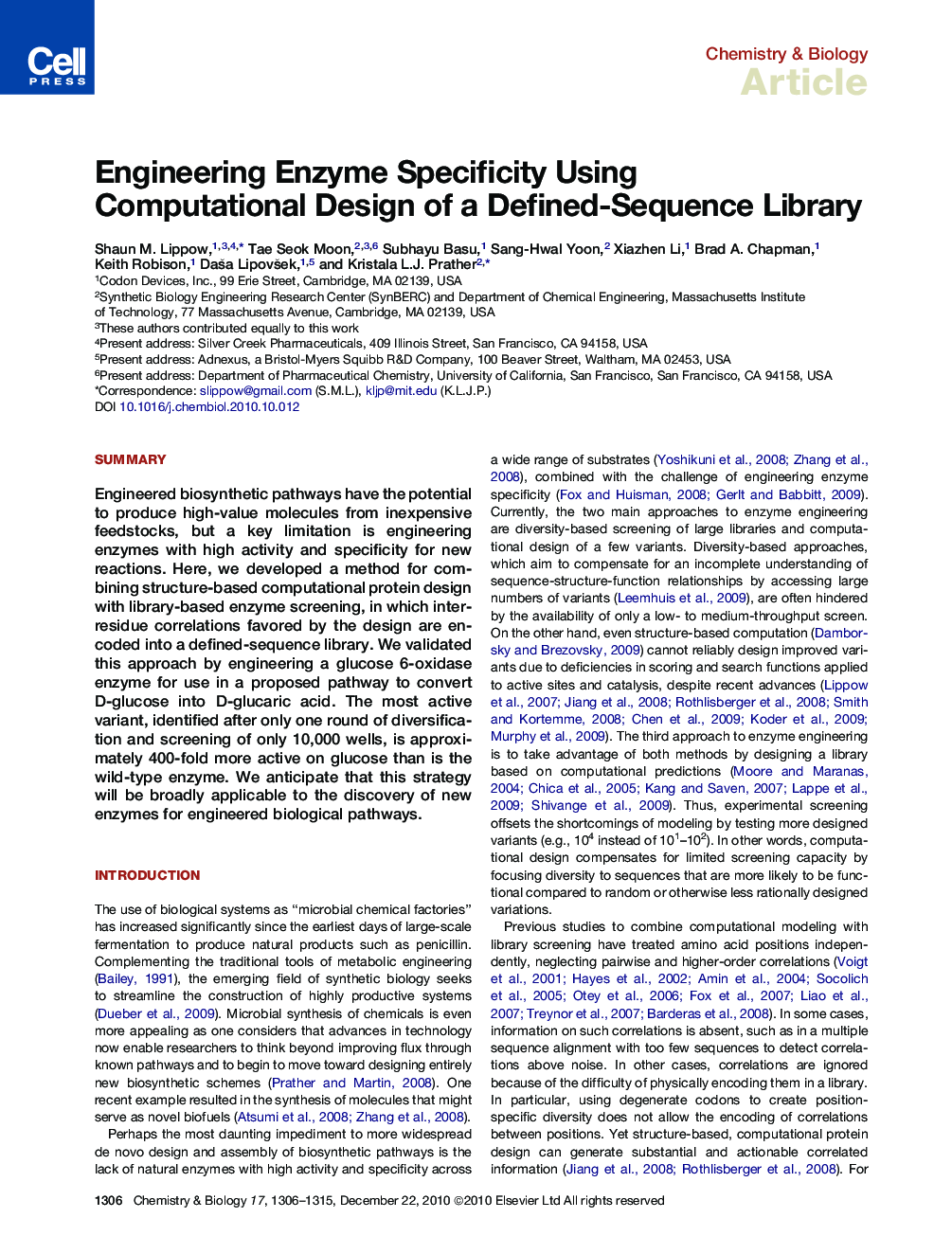| Article ID | Journal | Published Year | Pages | File Type |
|---|---|---|---|---|
| 1392192 | Chemistry & Biology | 2010 | 10 Pages |
SummaryEngineered biosynthetic pathways have the potential to produce high-value molecules from inexpensive feedstocks, but a key limitation is engineering enzymes with high activity and specificity for new reactions. Here, we developed a method for combining structure-based computational protein design with library-based enzyme screening, in which inter-residue correlations favored by the design are encoded into a defined-sequence library. We validated this approach by engineering a glucose 6-oxidase enzyme for use in a proposed pathway to convert D-glucose into D-glucaric acid. The most active variant, identified after only one round of diversification and screening of only 10,000 wells, is approximately 400-fold more active on glucose than is the wild-type enzyme. We anticipate that this strategy will be broadly applicable to the discovery of new enzymes for engineered biological pathways.
► Developed a method for combining computational design and library-based screening ► Incorporated designed amino acid combinations into a defined-sequence library ► Engineered a glucose 6-oxidase enzyme with improved activity ► Demonstrated efficient exploration of mutations across many protein positions
